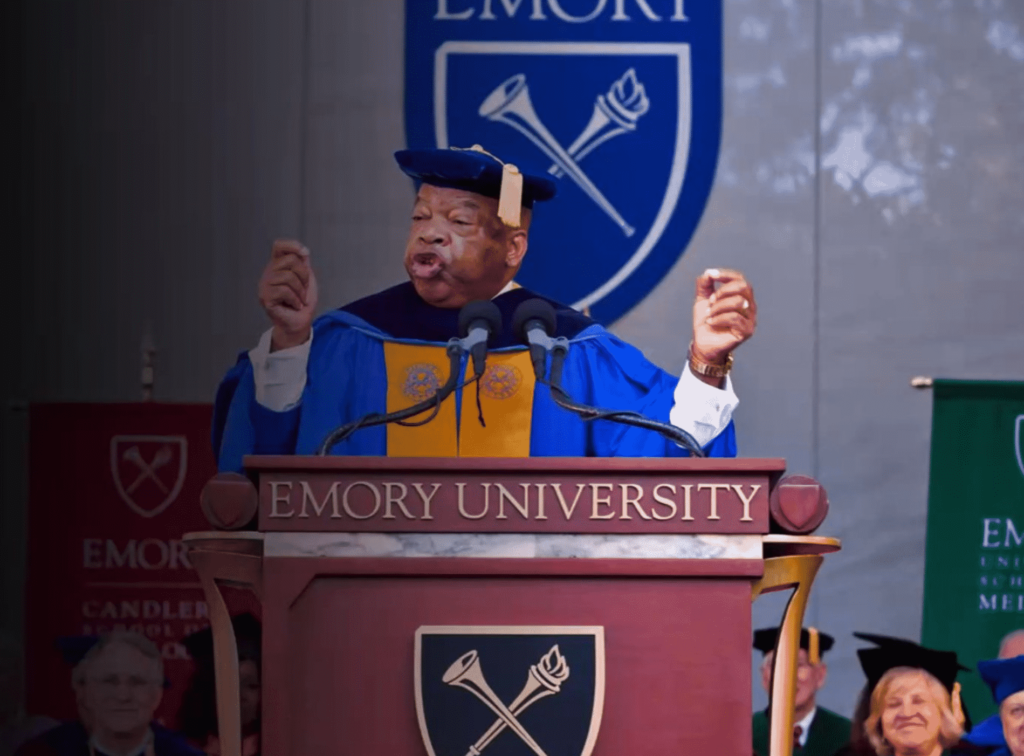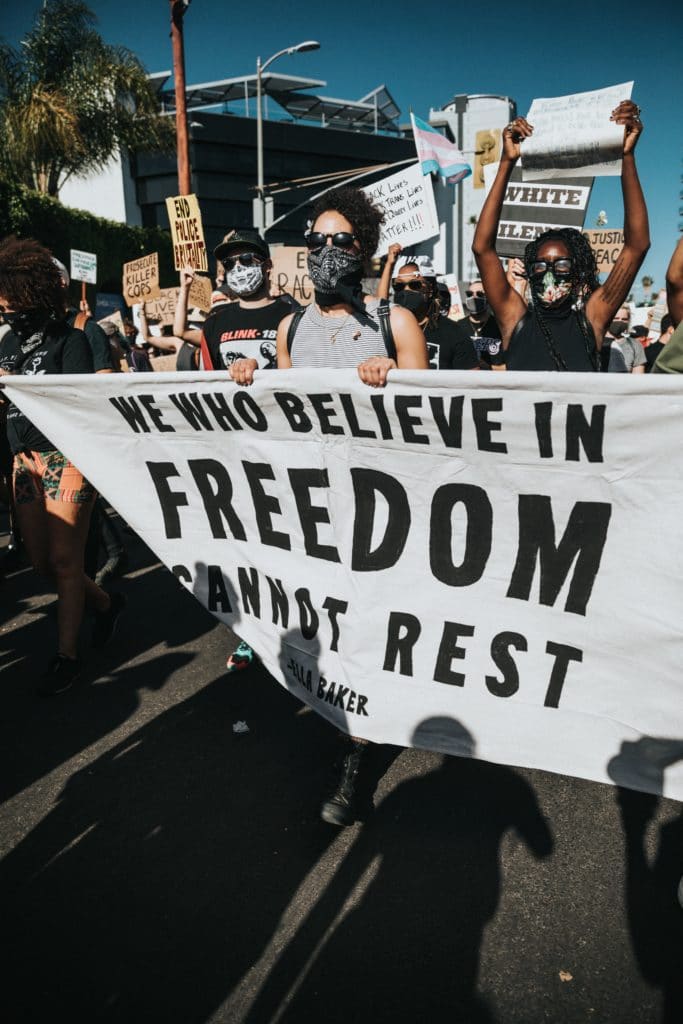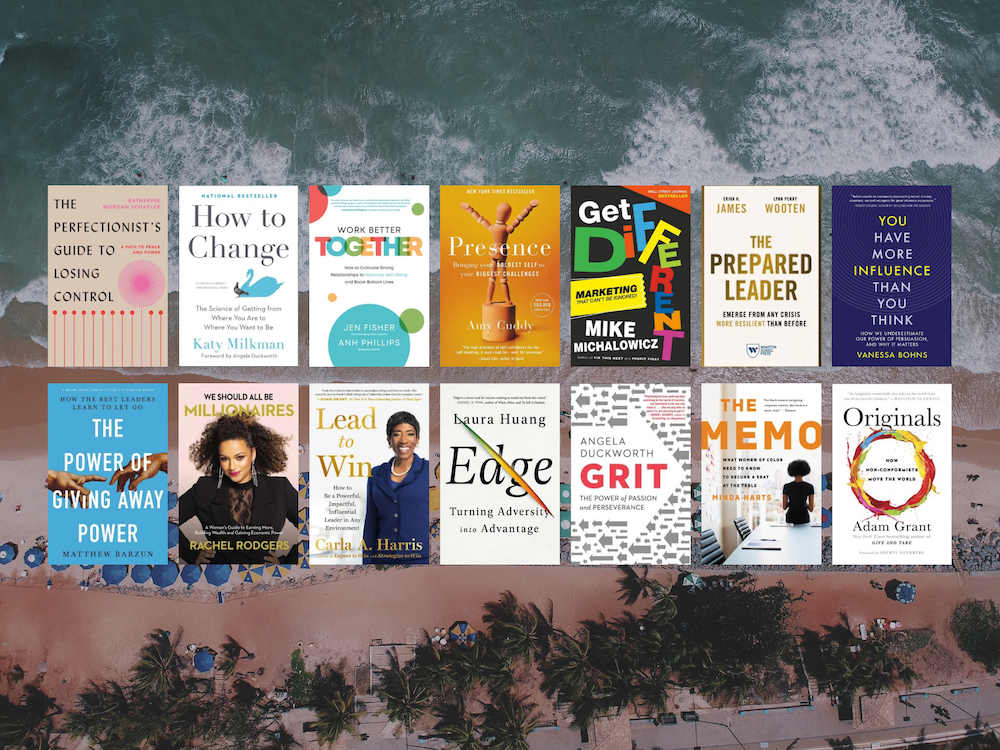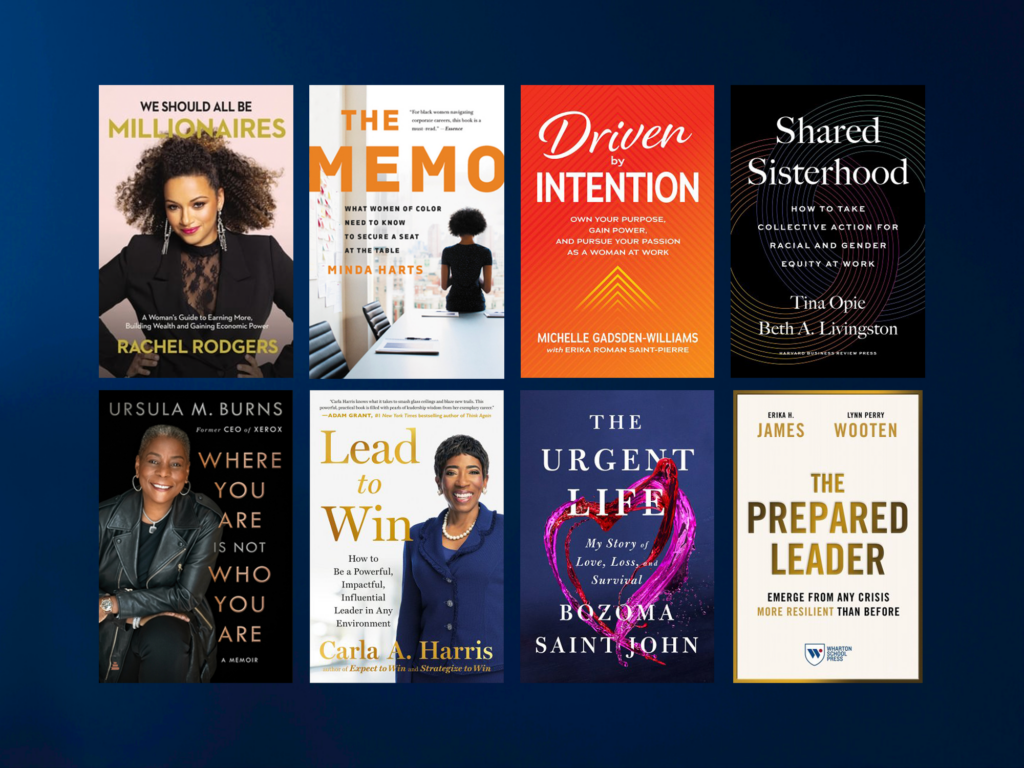Now is the time to act: The John R. Lewis Racial Justice Case Competition

Estimated reading time: 15 minutes
The power of community in The John R. Lewis Racial Justice Case Competition
The dialogue opened up when Dean Brian Mitchell of Emory’s Goizueta Business School gathered students and members of the community onto a call during this summer’s protests and calls for racial justice following the killings of George Floyd, Breonna Taylor and Ahmaud Arbery. Dean Mitchell (or Dean Brian, as he is known by the community) described the lead-up… “We’ve grown up learning about racial tensions and the Civil Rights movement, but we hadn’t seen it with our own eyes until we participated in it this summer.”
As second-year MBA Maja Alikalfic describes it, the community is tight-knit. A big draw for applicants is how Goizueta offers rigorous academics coupled with a more connected, intimate experience. After having spent the semester in virtual classes, the opportunity to gather on a call this summer, to speak without agenda and simply make space for one another, was powerful. And for many—Dean Brian included—therapeutic. His goal was not just to lead but to be present, come together and have difficult but necessary conversation. In that call, inspiration struck Willie Sullivan, a second-year MBA, to take action. The call, coupled with Willie’s recent reading of an HBS Case entitled, “African American Inequality in the United States,” was where the idea for the John R. Lewis Racial Justice Case Competition started to form.*
* Case authors Mayra Garza and A. Kamau Massey joined the Competition as judges.
The power sits with you
Originally from Arkansas, Willie Sullivan grew up in the performing arts as an accomplished opera singer and performer and spent most of his pre-MBA years in marketing and fundraising at his alma mater the University of Michigan. In going to business school, his goal was to have an impact on the lives of others through the nonprofit sector, where he could build upon his foundation and work thus far.
On the call, Dean Brian recalls a point made by someone about the feeling of helplessness—about wanting to engage, wanting to do something but feeling powerless and unsure of how to move. In that moment, Dean Brian describes Willie speaking up and holding his classmate to account, saying, you have more power than you think, we have more power than we think. All of these corporations are giving us all of this attention, they want our talent, and what comes with that ought to be our passion and our energy for racial justice. Willie explains his thoughts in that brief moment of frustration, ”there are truly people in this country who are powerless. That have no power whatsoever. And nobody going to a top 25 business school in the United States, is one of those people.” That’s where it all started.
The moment of action – the time to mobilize
Following that call, students were moved to act and the design of the competition began. Making best use of the attention of the media, of multi-national corporations and organizations (including the Democratic party) and the energy and diversity of the students involved, they mobilized. The question this competition set out to answer was, “how does a multinational [tech] company address issues of racial justice and inequality?”
Meeting the moment
The idea of getting into some good, necessary trouble caught on. In fundraising efforts, Willie relied on his background and connected with people in a moment that called for actions that, in the past, might not have been possible. There was a real desire to move, and the team found partners in Johnson & Johnson, HP, Salesforce, Southern Company, Truist and Walmart. These Fortune 500 companies from Day 1 have committed, in addition to funds, time from their teams (including executives), space for participants to conduct necessary research (bolstered by a research sponsorship from Survey Monkey), and honest investment in the success of the competition and participating teams.
Maja’s pre-MBA career in digital sponsorship and marketing and served her well as the Case Competition’s Marketing & Communications Chair. She said building the Competition required a full team effort, citing the power of the Goizueta community. Everyone was part of the mission and had the autonomy they needed to make things happen. Dean Brian shared that the theme of urgency was clear to all involved. He added that he was impressed with the way that the problem was framed. The accountability was placed on corporate partners in asking what they could do — what they could actually commit to. That was critical to making sure that proposals could truly contribute to outcomes.






Engagement from across the country
The Competition drew 105 teams and more than 500 participants from business schools, law schools, graduate programs in public health and social work, medical schools and undergraduate programs across the country. To anyone unfamiliar with a case competition, a participant proposal / submission is not a small piece of work; it includes research, analysis, recommendations and more. The amount of time, effort and energy that went into these is truly impressive. And it speaks to the commitment and the level of awareness of students everywhere. We later heard that following the preliminary round in December, as 100+ teams were culled down to 24 semifinalists, those who didn’t advance past the first stage still remained invested. They reached out seeking feedback on how to strengthen their proposals and what they could do differently next year. Competition organizers have been blown away by participant engagement.
The Competition
More than 70 judges across academia and the private and public sectors participated in the selection of teams who would move forward. On January 21, four semi-finalist teams presented to each sponsor company, leading to a final presentation later that day. Teams took different approaches to solutions and presentations themselves, but all delivered proposals that made the issues real to the sponsor companies. Willie added: the most successful teams were the ones who spoke to real people, to understand what they are dealing with on the ground level, to understand the stories behind the data and research that bring them to life. The power of narrative was clear at all stages of the Competition and its development.
Teams tackled what could be done quickly, and what could be done in the long run. They made real for companies the power they hold, and what could be done alter the course of someone’s life. (Lives of the formerly incarcerated, of young Black girls, of Black-owned technology companies, and more.) This was what the Case Competition organizers envisioned — and the teams truly delivered.
The Finalists
- Harvard Business School’s Team JEDI with Truist
- MIT Sloan’s Civil Disobedients with Salesforce
- Yale SOM’s Team About Face with Walmart
- USC Marshall’s Coalition 4 Change with Johnson & Johnson
- MIT Sloan’s The Boy from Troy with Southern Company
- Emory Goizueta’s I Have a Dream with HP
Winners were announced by Jerrick Lewis, nephew of Congressman John R. Lewis:
$20,000 1st Place Prize – Coalition 4 Change from USC Marshall – Johnson & Johnson
Half of their winnings will go to Step Up for Students & Black Girls Code.
$10,000 2nd Place Prize – I Have a Dream from Emory Goizueta – HP
Half of their winnings will go to One Goal of Metro Atlanta.
$10,000 audience prize – Team JEDI from Harvard Business School – Truist
Half of their winnings will go to The Advancement Project.
* In total, the Competition provided $32,000 in charitable donations to non-profit organizations. Congratulations to all who competed. We truly enjoyed the final presentations & invite you to share your experience with us, anytime.
We caught up with Allegra Stennett, first-year MBA and Finalist from MIT Sloan’s Civil Disobedients. She shared her experience participating and working with Salesforce:
MBAchic: Tell us a bit about your background & path to business school
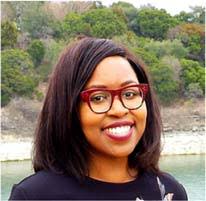
Allegra Stennett: My background is in finance. I spent 5 years at J.P. Morgan in several corporate and investment banking roles across New York, Houston, and London. I really enjoyed my time in banking and appreciated learning about a variety of industries in a relatively short amount of time. Initially I didn’t see myself leaving, but through covering Healthcare, I noticed several inefficiencies that I thought could be solved through entrepreneurship. The desire to build an enterprise was a motivating factor in pursuing an MBA.
MBAchic: How did you first hear about the case competition? What were your initial feelings / thoughts?
AS: I first heard about the competition because an MLT buddy of mine posted it in a group chat. I sent it to a Sloanie friend who was also passionate about racial justice and we formed a team. I thought it was high time for this type of competition and I am really glad Emory decided to launch it. The murder of George Floyd has definitely been a catalyst for this and other initiatives. However my focus and desire are for companies to practice in their operations what they preach in their public relations, particularly once the hype has died down.
MBAchic: What was the most challenging aspect of the entire experience? What surprised you most? What was the most rewarding?
AS: One of the biggest challenges our team grappled with is the line between innovation and feasibility. With some of us having corporate backgrounds, we were well aware of the levels of bureaucracy that often stifle high-impact programs. The most rewarding part of the experience for me was to hear Jason Wild, Salesforce’s SVP of Transformation & Innovation give us a verbal commitment to implementing some of our ideas in the firm.
MBAchic: What lessons do you walk away with from Competition day and the entire experience? Was this your first case competition? If not, how did this differ from others where you’ve competed?
AS: This was my first case competition (and I think the first for the other members of my team). I really enjoyed the experience. A lesson for me from competition day was realizing there is a necessary, heightened level of clarity that is needed as you progress throughout rounds of the competition, particularly because the judges weren’t allowed to ask us questions in the finals.
MBAchic: What can you tell us about your proposal? What was your planning process like? Did you get to interact with other teams and connect?
- Proposal: Our proposal was based on Salesforce’s problem statement which comprised goals relating to People, Purchasing, Philanthropy, and Policy. Our central point was what we believe to be the biggest breach of trust between the Black community and the United States: modern-day slavery as permitted by a clause in the 13th amendment. A big shout out to my teammate Courtney, who pushed us on this.
- Planning process: Our process included dividing the team so that each of Salesforce’s “P”s had at least two members working on solutions. We also had recurring meetings which served as status updates. One of the biggest parts of our process was hosting a focus group of Black, former Salesforce employees. The focus group really gave us insight into the culture and further informed our recommendations.
- My team members were:
- Brooke Wages, 3rd year dual degree w/ HKS and CEO of Surge Employment Solutions
- Courtney Jacobovits, 1st year MBA with a background in government and urban planning
- Darryl Lindie, 1st year MBA with a background in the U.S, Navy
- Mike Smithers, 2nd year MBA with a background in education
MBAchic: What advice would you give to people interested in business school who might be on the fence, especially after the last year?
- Think about what you’re looking to get out of business school and the network you’d like to cultivate. I wrote down the top things I wanted in my MBA experience and focused my energy on schools that had those things. For example, a school with a strong entrepreneurship center was a nonnegotiable.
- Do not be afraid to apply to “reach” schools. The answer will always be “No” if you don’t apply.
- Speak to alumni to hear about their experiences.
- Apply! Getting accepted doesn’t mean you have to go; it just gives you the option to do so.
MBAchic: What’s next for you?
AS: This is the million dollar question! I am looking forward to the next 1.5 years I have left at MIT. Some of the things I look forward to include TAing a negotiation course, participating in Sloan’s Action Learning Labs in the fall, and post-Covid travel with Sloanies. Post-MBA I will most likely be working for an early-stage startup. The MBA gives so much career flexibility that I truly don’t know what I’ll be doing in the next few years and I’m learning to embrace the uncertainty.
MBAchic: Any guidance or words you’d like to leave us with?
AS: In the spirit of John Lewis, I encourage all current and future b-school students to embrace getting in “good trouble”. From the MBA classroom to the boardroom and everywhere in between, we need to be a new generation of business leaders that are not solely focused on profit to the detriment of the communities in which we serve.
Thank you Allegra for sharing your experience and some of your own MBA journey and advice. Watch Team “Civil Disobedients” and all finalists present here.
Born out of community
In the weeks following the competition, the teams and sponsor companies are already putting the proposals into motion. There’s even some cross-pollination of ideas, as sponsor companies ask about elements presented to other companies. It’s refreshing and encouraging to see this level of commitment from major Fortune 500 players.
Maja described the case competition as different from any other she’d experienced. The focus was less on data and analytics, and more on people. The narratives and stories of impact “really resonate in the competition.” It isn’t just about profits, it is about implementing solutions that are best for the companies, people and society in general. Dean Brian again pointed out the sheer range, number and diversity of participants. That spoke not only to how strongly Competition goals resonated but also to the urgency of the moment.
The power of community, and of a grand vision
The experience showed just how powerful having a clear vision and galvanizing a strong team and community around it can be. It was clear that the strength of the community at Goizueta — the trust and ability to speak honestly and openly — was vital to bringing a Case Competition of this scale to life.
Though John Lewis tragically passed away this summer (a month into Case Competition planning), his family supported and were pleased to participate in the Competition. His nephew Jerrick Lewis presented the winners while The Lewis siblings served as honorary judges.
Born out of a strong, tight-knit community, the Competition relied heavily on a large but nimble team. They relied on relationships and connections across the country (including their partnerships with the National Black MBA Association, The Consortium and Management Leadership for Tomorrow) and put those resources to work. As Dean Brian said, “you can’t do it all yourself.” Organizers did not appear to have any second thoughts about reaching out to admins and faculty because the buy-in was clear. They took deliberate, swift action, and kept it moving, because everyone was 100% on board.
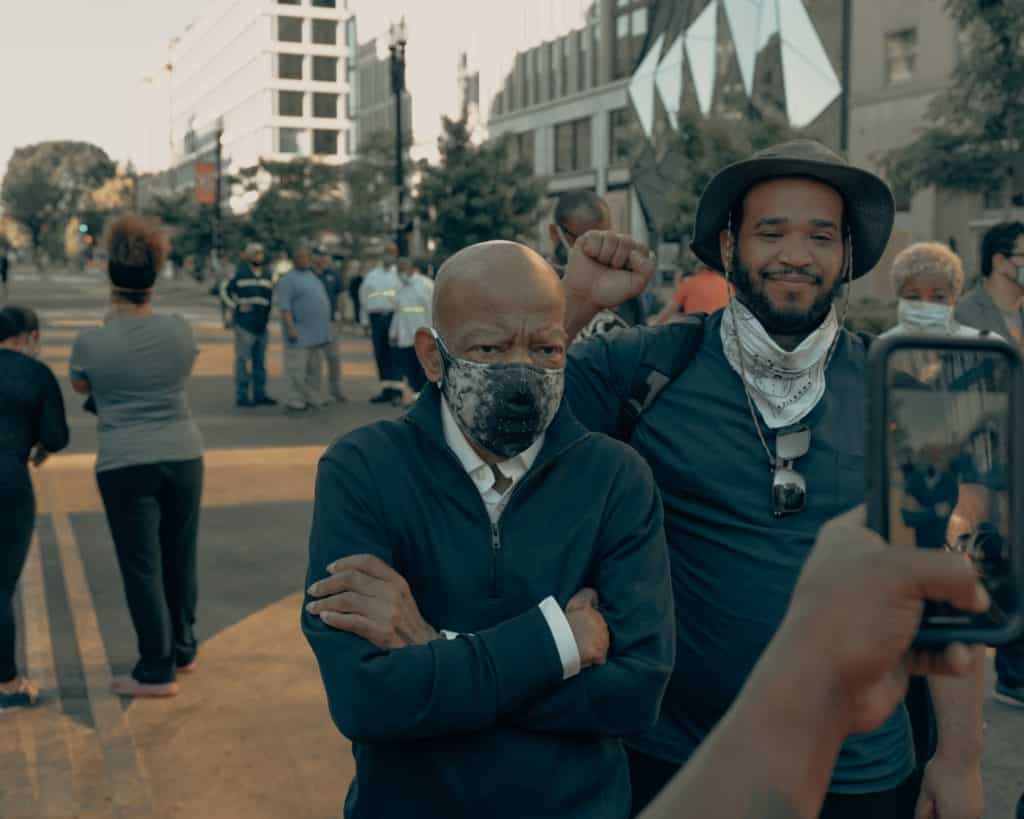
Honoring the legacy of John R. Lewis
What an incredible way to honor the legacy of Congressman John R. Lewis. To gain commitment for action from some of the world’s leading companies to combat racial injustice that persists today… It is a fitting tribute to The Boy from Troy, who dedicated his life to action and serving his community and country.
Congratulations again to the entire John R. Lewis Racial Justice Case Competition team! Congratulations to to the Emory Goizueta community, and to everyone who participated and shared in the pursuit of good, necessary trouble.
Thank you to Dean Brian Mitchell, Founder and Managing Director Willie Sullivan and Marketing & Communications Chair Maja Alikalfic for sharing with MBAchic how the competition came together and all that it took to make it happen.
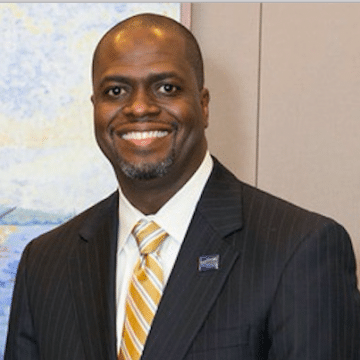


If you’re reading this as a student, faculty member or potential sponsor company, watch the final presentation here and get involved. As always, if you’re interested in getting published on MBAchic as a student, professional, applicant, professor, faculty or friend of MBAchic, please reach out here.
Photos furnished by Emory Goizueta, Allegra Stennett, Maja Alikalfic and Willie Sullivan. Header art by R. Gregory Christie, created for the John R. Lewis Racial Justice Case Competition.
